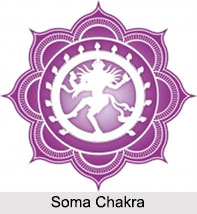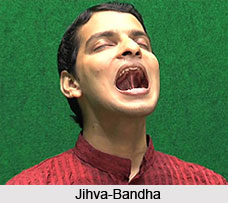The sixteenth yoga sutra states about the object and its relation to an individual`s mind who perceives it. Every individual is different and therefore his way of perceiving an object is entirely different. It always depends on one`s intellectual capability. If the mind or consciousness fails to recognise the object, that does not ever mean that it does not exist. A man is built up of the three institutions of mind, body and soul. Mind is looked at as the eleventh sense. Body, senses, mind, intelligence and self are mutually dependent, while the soul is eternal. The mind stimulates the senses of perception, and in turn the organs participate in the impressions of accumulating these perceptions. If an object does not stimulate the mind or sense, it stays unperceived and the mind fails to comprehend it. However, a true yogi is the one who is liberated from these perceptions of the gunas, and perceives an object in its truest sense.
Na not
Ca and
eka cilia one consciousness
tantrarn dependent
ced it
vastu object
tat that
apramanakam unobserved, unapproved, unrecognized
tada then
kirn what
syat would happen
An object exists independent of its cognisance by any one consciousness. What happens to it when that consciousness is not there to perceive it?
The essence of an object is not dependent upon one`s mind or consciousness. If the mind or consciousness does not recognise the object, it means that mind or consciousness does not see, or that the object does not stimulate the seer. But this does not mean that the object does not exist.
As prakrti is as real and eternal as purusa, so are object and subject. Due to unripe intelligence and differences in the development of consciousness, each individual perceives objects according to his own intellectual `wavelength`, although their essence does not change. When a yogi reaches perfection in his sadhana, intelligence and consciousness touch the supreme knowledge - he becomes a fulfilled yogi, and remains merely a detached witness of objects.
Man is a trinity of body, mind and soul. According to Indian philosophy, mind is treated as the eleventh sense. The five organs of action, five senses of perception and the mind are considered to be the eleven senses. Body, senses, mind, intelligence and self are interdependent - they are part of the cosmic consciousness (mahat), and susceptible to mutation and change, unlike the soul, which is undying. The mind ignites stimuli in the senses of perception, or vice versa, and the organs of action participate, so that the mind can experience objects. These experiences are imprinted according to the development of the mind, and in turn create impressions on the consciousness.
If an object does not stir the mind, it remains unperceived by the mind or the mind fails to grasp it. When the mind is released from the play of the gunas, it perceives objects in their true reality, and remains free from impressions. Its contact with perceived objects is cut off. Then mind and soul become one, and are one with the essence of all objects. (1.43; 11.22; iv.22, 31, 32.)



